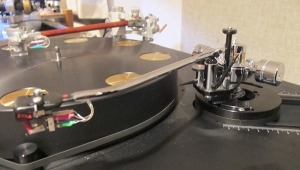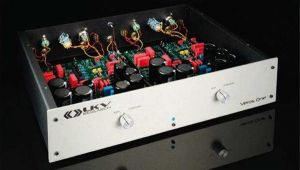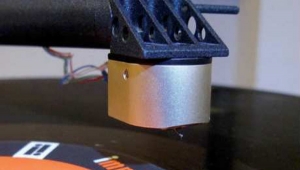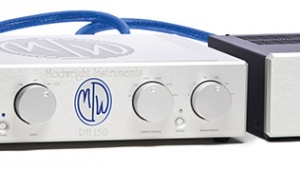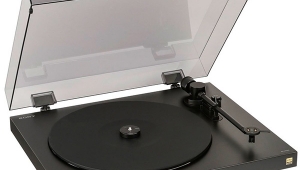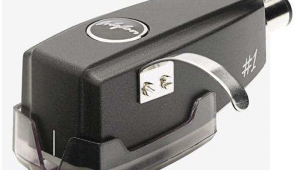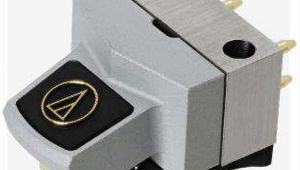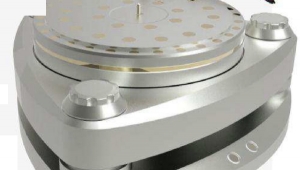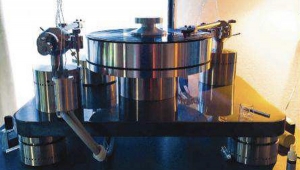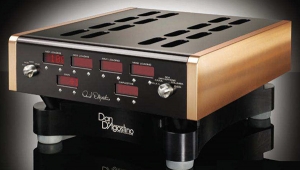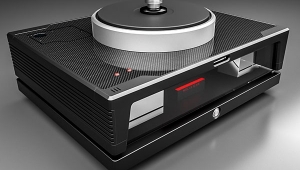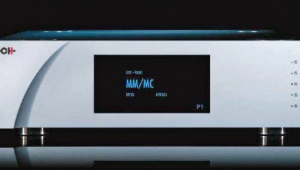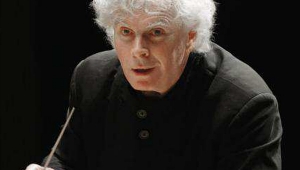| Columns Retired Columns & Blogs |
Analog Corner #255: Kuzma Stabi M turntable, Audio Tekne TEA-8695 and Xactive Argo phono preamplifiers Page 2

Audio Tekne TEA-8695 PCS phono preamp: A really big show
How about a moving-coil-only, 100lb, tubed phono preamplifier costing $55,000? Audio Tekne's TEA-8695 PCS is the company's "midpriced" phono preamplifier. There's one that's more expensive, but it requires the accompanying preamplifier for its power.
I wish, for this much scratch, the company had invested in a competent English-speaking translator. Instead, it appears to have hired the same person who translates for Miyajima Laboratory. The translations are charming and humorous—until you really need to understand them.
The documentation includes a schematic, a diagram of the model's physical layout, and the most complete RIAA measurements I've seen: the individual unit's measured performance is listed for each specced curve frequency. Inexplicably, no specs are provided for gain, frequency response, distortion, or signal/noise ratio. Nothing. The website does list a few specs at www.audiotekne.com/en/products_tea-8695.html, including RIAA accuracy of ±1.5dB, 20Hz–15kHz, which isn't all that impressive for so costly a product, but it's probably more honest than many such measurements, which can be grossly overstated.
Eleven massive transformers are mounted on the top of this tray-construction model. Open the chassis bottom and you'll see the most gorgeous, cleanly laid-out point-to-point wiring, and nary a circuit board in sight. There are a total of 12 signal-processing tubes, and one rectifier tube. Following the massive step-up transformers, each channel uses pairs of 12AY7/6072 tubes for the first two gain stages, and pairs of 5965/E180CC tubes in the output. Rectification is via a single 6CA4/EZ81.
Based on what I understand from the schematic—I'm not an electrical engineer, so forgive me if I'm mistaken—this is a low/constant-impedance, LCR-type RIAA network using Super Permalloy core inductors in a way similar to how Ypsilon and some other brands produce RIAA compensation.

On the rear panel are inputs marked Low (for cartridges of up to 10 ohms internal impedance) and High (10 ohms and up), as well as Low and High gain output selection via a toggle switch. From the instructions: "LOW: Please connect, when the gain (amplification) of the audio equipments used back is not so large. . . . HIGH: Please connect when the gain (amplification) of the audio equipments used back is large."
So Low is for when the rest of the system's gain is low, High is for when the rest of the system's gain is high. In other words, Low is high gain, and High is low gain. Go figure. There are also RCA and "convenience" balanced outputs. I wish the instructions showed the rear-panel layout.
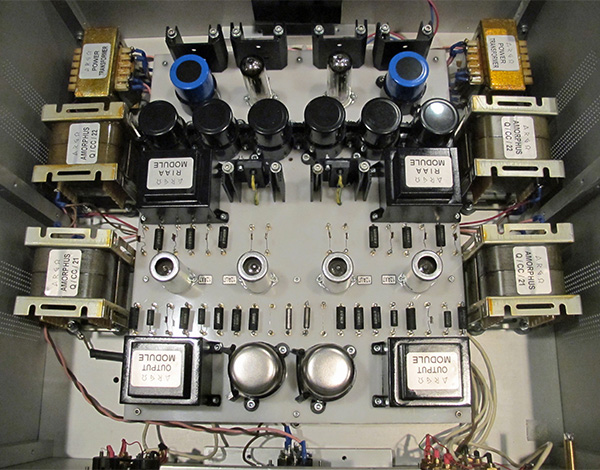
$55,000 Sound? If you read my review of SAE's 2HP power amplifier in the October 2016 issue, you'll know what to expect here. The TEA-8695 PCS is one of those "if this is correct, everything else is wrong" products. It produced massive but well-controlled bass, as expected from an LCR-based RIAA circuit; superrich mids; and smooth yet well-extended highs. All that, along with well-articulated top-end transient response, a deep, enormous soundstage, and, overall, textural and harmonic luxuriousness that quickly conquered my skepticism—even though I just knew the Audio Tekne was pouring on the syrup.
When I played either the original or Impex's excellent reissue of Heifetz-Piatigorsky Concerts, with pianist Jacob Lateiner (LPs, RCA Living Stereo LSC-2770 or Impex IMP 6025), I was treated to luxury I can't afford: a presentation of Jascha Heifetz's violin at center stage that stood starkly in three dimensions, producing unimaginably rich and believable textures and woody harmonics, with Lateiner's piano placed well behind, at stage left. Gregor Piatigorsky's cello had the desired deep, sonorous richness without ever sounding sluggish or muddy. Everything was vividly and richly presented, yet all was well controlled and rhythmically lithe. Tony Bennett's At Carnegie Hall (2 LPs, Columbia/Analogue Productions AAPP 823) produced an enormous soundstage on which Bennett's voice hovered plasma-like, the hall reverb reflecting well behind and around him.
I'm sure that, whatever your musical tastes, the Audio Tekne–SAE combo will wow you. That combo sounded ideal in my system, timbrally, spatially, and dynamically. The Audio Tekne had dynamic slam to spare, particularly on the bottom.
But through my reference monoblocks—darTZeel's NHB-458s—it was somewhat too much on the Tony Bennett record, though still enjoyable. When I switched to a reissue of Linda Ronstadt's What's New (LP, Asylum/Analogue Productions APP 073), the TEA-8695 was just too rich and warm for her voice to be properly projected onto the soundstage, though Nelson Riddle's lush orchestrations pleased.
I switched to my reference phono preamp, Ypsilon's VPS-100 with 16L step-up transformer. It produced a more natural-sounding Ronstadt, and enough saturated string richness to satisfy, along with more string definition and bow detail.
The SAE–Audio Tekne combo even worked with rock records, and jazz classics were sensationally spacious, harmonically full-bodied yet rhythmically satisfying—though less so through my reference darTZeels.
If you can afford such luxury—especially if you listen mostly to classical music—and can pair it with compensating electronics that tighten and grip (unless you really like thick'n'rich), Audio Tekne's TEA-8695 PCS might be for you. It would be an entertaining alternative to a faster, somewhat leaner, more transparent phono preamp—but for $55,000, that's expensive entertainment! Of course, you could say that about this hobby in general. Overall, then, I'd say that the Audio Tekne TEA-8695 PCS is a singular piece of expensive phono kit that I'm glad I got to hear.
I found this quote on Audio Tekne's website: "Let's listen to music, without hearing sound." I get it. On that basis, the TEA-8695 PCS succeeds completely. In the right system, it will sing—or she will sing and/or he will sing—without making a "sound."

TruLife Audio Xactive Argo phono preamplifier
Based on the Argo and the sound in TruLife Audio's room at the 2016 High End show, in Munich, this Greek tube-enthusiast company has upped its game considerably since eight years ago, when I first reviewed their Reikon, a three-piece, $43,500 phono preamplifier (Stereophile, November 2008).
Aristomenis Georgiadis, the father of the company's founder, built precision transformers for military, medical, and industrial applications. His poor son Velissarios grew up to be an audiophile, and in 1995 started TruLife within Elnet, the company Aristomenis had founded in 1957.
Everything I wrote in 2008 about the Reikon's sound is true of today's Xactive Argo, except for two things: As best I can tell, given the intervening years and the different system I now own, the Argo's bass performance is better—and the single-box design has dropped the price considerably, to around $20,000. (The price I was given was in euros, and I'm not sure that TruLife currently has a US distributor.)
At 18.9" wide by 7.3" high by 18.1" deep and weighing 40.1lb, the Xactive Argo is large but still fits on a standard shelf. Everything is now housed in a single case, but, as with the Reikon, there are pairs of 12AX7 and 12AU7 tubes and a pair of 6V4 tube rectifiers, as well as pairs of passive RIAA and output modules and two pairs of large chokes. Again, the power supply is dual mono, with two power transformers. My biggest complaint concerns the placement of the Argo's On/Off switch: in the middle of the rear panel. In my system, it was nearly impossible to reach.

The sound produced in Munich with all-tube, all-TruLife electronics, a Hartvig turntable with Triplanar tonearm, and Verity Audio speakers was the kind I could have sat down and listened to for hours, had I the time—and this was on the noisy convention floor, in one of those portable "sound modules." The Argo produced the best kind of tubed phono-preamp sound: quiet, silky smooth, and extended on top, with enticing musical flow and richly drawn instrumental timbres—even with the 0.2mV-output Audio-Technica AT-ART1000 MC cartridge.
Transient attacks were fast, precise, and believable, if not as fast or as sharp (in the best sense of the word) as with the best solid-state designs; nor did the bottom end have the speed and grip of the best solid-state phono preamps—but those don't float round, three-dimensional images the way the Argo did.
From top to bottom, the Argo reproduced musical textures with uncanny grace and precision, never sounding soft and never adding edges. The midrange was billowy, unforced and expansive, but instruments never lacked the requisite focus, body, or texture.
Change "Argo" to "Reikon," and that's what I wrote back in 2008. The Xactive Argo sounded closer to the far more expensive, but more dynamic and better-focused Ypsilon VPS-100 than to the iconoclastic Audio Tekne TEA-8695 PCS. But trust me: Every one of these three produced the magic that digits don't.
Footnote 2: Audio Tekne Incorporated, 596-4, Sanyu-town, Hachioji-city, Tokyo, Japan 192-0012. Tel: (81)426-91-2678. Web: www.audiotekne.com
Footnote 3: TruLife Audio, 40 Hr. Lada Street, Peristeri 12132, Athens, Greece. Tel./Fax: (30) 210-5757605. Web: www.trulifeaudio.com
- Log in or register to post comments


